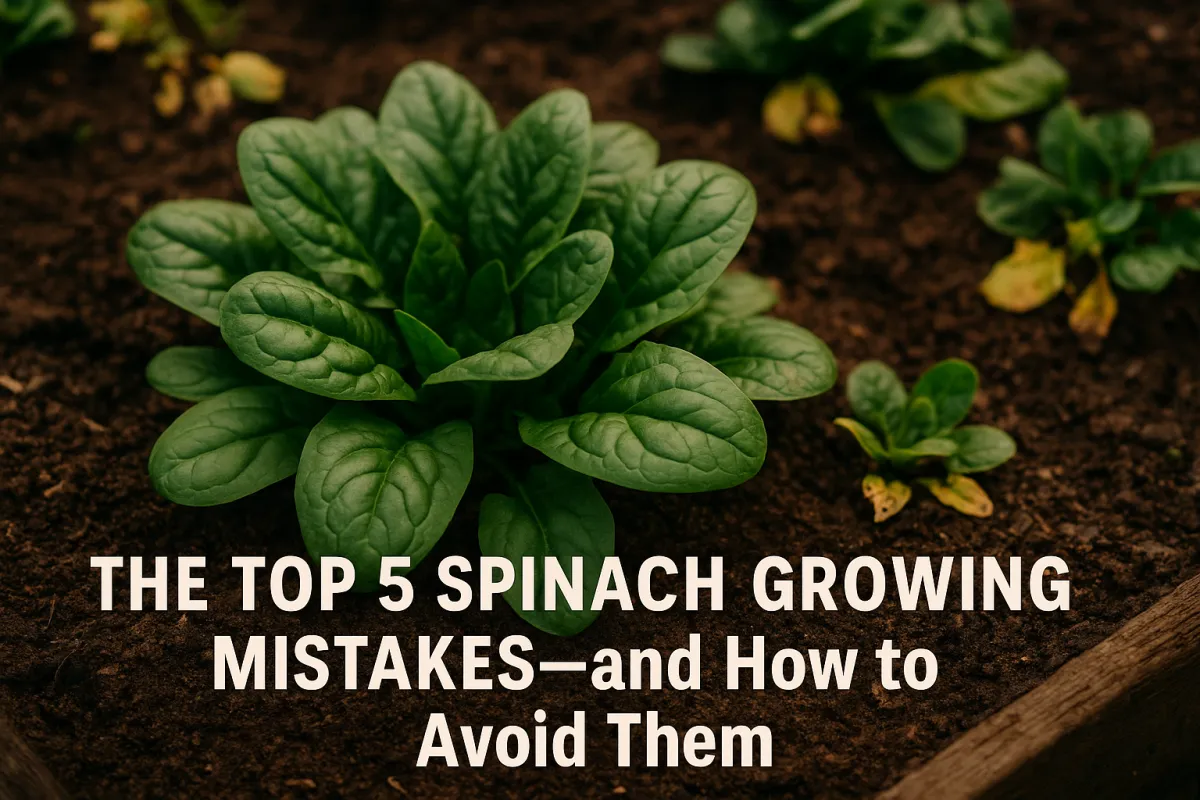
The Top 5 Spinach Growing Mistakes—and How to Avoid Them
The Top 5 Spinach Growing Mistakes—and How to Avoid Them
The Lesson Learned from My First Spinach Patch
I still remember the first time I planted spinach on my own. I thought I was ahead of the game—seeded in early May, watered every day, and packed the rows tight so I could get “more food” from less space. By the end of the month, the plants were shooting up flower stalks instead of leaves, the soil smelled swampy, and what spinach I did have was bitter and stunted.
Spinach is one of the most forgiving greens you can grow—if you avoid a few classic mistakes. Here’s what I learned the hard way, and how you can skip the rookie errors and go straight to tender, productive leaves all season.
1. Planting in Heat-Prone Windows (Bolting Risk)
Spinach is a cool-weather crop. Once the days get long and the soil warms, it shifts from leaf production to seed production—a process called bolting. When that happens, flavor goes bitter fast.
The trick is to plant when your mornings still require a jacket.
USDA Zone guidance:
Zones 3–6: Plant in early spring (as soon as soil can be worked) and again in late summer for a fall crop.
Zones 7–10: Late winter or very early spring plantings give the best harvest before heat sets in. Fall plantings often overwinter for an early spring flush.
Grandma’s Tip: “Plant your spinach when you still need a jacket in the morning.” It’s not about the calendar—it’s about the weather.
2. Overcrowding Seeds and Stunting Growth
I get it—more seeds feel like more food. But spinach doesn’t work that way. Overcrowded plants compete for light and nutrients, trap moisture, and invite disease.
Direct sow spacing: Drop seeds about 1 inch apart in rows 12–18 inches apart. Once seedlings emerge, thin to 3–4 inches between plants for optimal airflow and leaf size.
Step-by-step for proper spacing:
Sow seeds evenly—don’t dump the packet.
Once seedlings have two true leaves, snip extras at the soil line (don’t pull; you’ll disturb roots).
Use thinnings in salads—nothing wasted.
3. Poor Soil Prep Leading to Slow Starts
Spinach is a fast grower, but it needs a strong start. Planting in heavy, compacted, or nutrient-poor soil slows everything down.
Soil basics for spinach:
Loose, fertile, well-drained soil.
pH between 6.0 and 7.0.
Enriched with compost before planting.
Quick drainage test: Dig a hole about 8 inches deep and fill with water. If it hasn’t drained within 4 hours, work in organic matter like compost or leaf mold before planting.
4. Overwatering and Root Rot
Here’s a mistake I made in that first spinach bed—thinking “more water = more growth.” In reality, too much water suffocates roots, invites fungal issues, and weakens plants.
Watering guidelines:
Water deeply once or twice a week, depending on rainfall.
Keep soil evenly moist, not soggy.
Use mulch to retain moisture between waterings.
Pro Tip: Always water in the morning so leaves dry quickly and diseases have less chance to spread.
5. Neglecting Pest and Disease Checks Early
By the time you see leaves riddled with tunnels from leaf miners, it’s often too late to save that batch. Early detection is everything.
Common spinach pests:
Aphids – cluster under leaves, leaving sticky residue.
Leaf miners – create winding, pale trails in leaves.
Cutworms – sever seedlings at the base.
Prevention steps:
Inspect leaves—top and bottom—weekly.
Use floating row covers to block insects.
Apply neem oil or insecticidal soap if pests appear.
Remove and destroy affected leaves immediately.
Closing: Encouragement + Next Step
Healthy spinach isn’t about working harder—it’s about working smarter. Plant in cool weather, give each plant its space, prep the soil, water wisely, and keep your eyes open for trouble.
If you’ve had trouble in the past, don’t let that stop you. Grab the Spinach Success Checklist, set a date for your next sowing, and see just how good your spinach can get.


Facebook
Instagram
X
Youtube